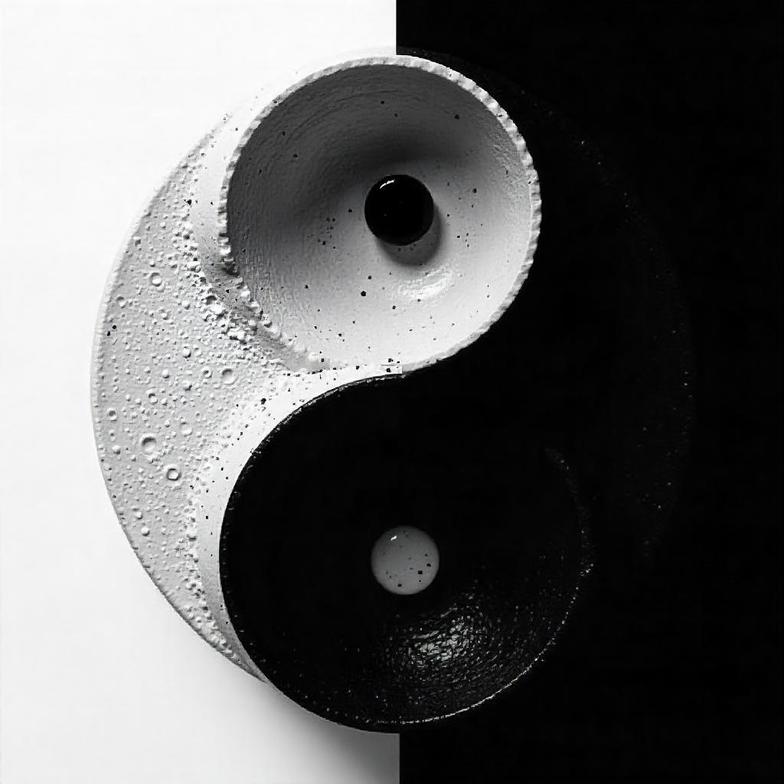
Yin and Yang… and Work Life Balance
Balance is a concept that has been around for centuries. Yin and Yang theory originated in ancient Chinese philosophy, but the ideology of balance has influenced humans in many different cultures. The concept of opposites like night and day, action and inaction, matter and anti-matter have been discussed by many philosophers like Socrates, Plato and Aristotle. But what is Yin/Yang theory and how does it fit in our lives today?
The Origins of Yin and Yang
Yin and Yang seem to have originated in text form around 2000-3000 years ago with mentions in the I-Ching and in Taoist philosophy. This larger view of the world and the phenomenon that the ancients saw eventually evolved into a guide for where humans fit and how to navigate life. Taoism explains the concept of Yin and Yang as the interplay of two opposite forces that complement each other. One force cannot exist without the other creating a symbiotic relationship between the two. Yin properties include dark, cold, rest, night, slow, while Yan would embody light, warmth, action, and fast. By virtue of opposition Yin gives Birth to Yang and Yang creates Yin.
The Core Principles of Yin and Yang
Yin and Yang symbolize balance, duality and interdependence of opposites. Two seemingly opposing forces are mutually dependent and one cannot exist without the other. There can not be action without inaction or sleep without awakening. These are the opposite ends of the spectrum, but Yin and Yang are in constant flux and continually in the process of creating the other. Just as the day turns into night, night also turns into day. And as we can find light in the darkness and darkness in the light of day, so too there is always a little bit of Yin in Yang and Yang in Yin. 1. Yin can not exist with out Yang and Yang cannot exist without Yin 2. Yin and Yang exist in mutual opposition 3. Yin transforms into Yang and Yang transforms into Yin 4. Yin and Yang are interdependent where there is always a bit of one within the other
Yin and Yang in Daily Life: Achieving Balance
The idea of Yin and Yang can also be applied to our daily lives. When we work we must rest. Here’s how we can apply Yin and Yang to our lives:
Work-Life Balance: Just as Yin and Yang are complementary, work and rest should also be seen as complementary. Many of us tend to get caught up in the Yang energy— working hard, being productive, and constantly pushing ourselves. However, to maintain balance, we need to incorporate Yin— moments of rest, relaxation, and reflection. Without rest, our productivity suffers, and without work, we lose purpose. Activities such as Meditation and Mindfulness, reading and very yin activities are wonderful for those with highly active jobs.
Emotional Balance: Yin and Yang also apply to our emotional states. Emotions like joy (Yang) and sadness (Yin) are part of the natural cycle of human experience. While it’s easy to favor one emotion over the other, acknowledging the value of both is crucial for emotional health. Allowing ourselves to experience the full spectrum of emotions creates a sense of harmony within ourselves.
Health and Wellness: Traditional Chinese medicine (TCM) is deeply rooted in Yin and Yang theory. Health is seen as a state of balance between these two forces. Illness or discomfort is often seen as the result of an imbalance, whether it's an excess of Yang (heat, hyperactivity) or an excess of Yin (cold, lethargy). For example, if someone is always overworked (Yang), they may experience burnout, whereas someone who is overly passive (Yin) might feel disconnected or depressed. Achieving balance through diet, exercise, sleep, and stress management is key to maintaining good health.
Embrace the Dance of Opposites The wisdom of Yin and Yang offers us a powerful tool for understanding and navigating the complexities of life. In a world that often celebrates extremes— whether it’s work or leisure, action or inaction, success or failure— this ancient philosophy reminds us that balance comes from embracing the full spectrum of human experience. It invites us to recognize the value of both Yin and Yang, to find harmony within ourselves, and to live more consciously, with a deep understanding of the interconnectedness of all things. So, the next time you’re feeling out of balance, ask yourself: What do I need more of right now? Perhaps you need a little more Yin— time for rest, contemplation, or creativity. Or maybe it’s time to tap into more Yang— energy, focus, and action. By recognizing where you stand on the Yin-Yang spectrum, you can realign yourself and cultivate a sense of equilibrium that leads to a more fulfilling, harmonious life.
Bibliography
Yin and Yang - World History Encyclopedia accessed July 15 2025
Taoist philosophy - Wikipedia accessed July 15 2025


